
2. Structure
1. Sound-sequences in sentences are structured into constituents.
(1) The native speaker intuitively recognizes that sound-sequences in sentences are
structured into successively larger sets or groups which we call constituents.
(2) Even the spelling system of English recognizes this, by grouping sound-sequences
into words, phrases, sentences.
(3) If sound sequences had only linear structure, then sentences would be written as
a continuous sequence of sounds as this: Thisboywillspeakveryslowlytothatgirl
But any native speakers can tell you that the sequential sounds are grouped(divided)
into words based on the native speaker’s intuition of his language as this:
This boy will speak very slowly to that girl
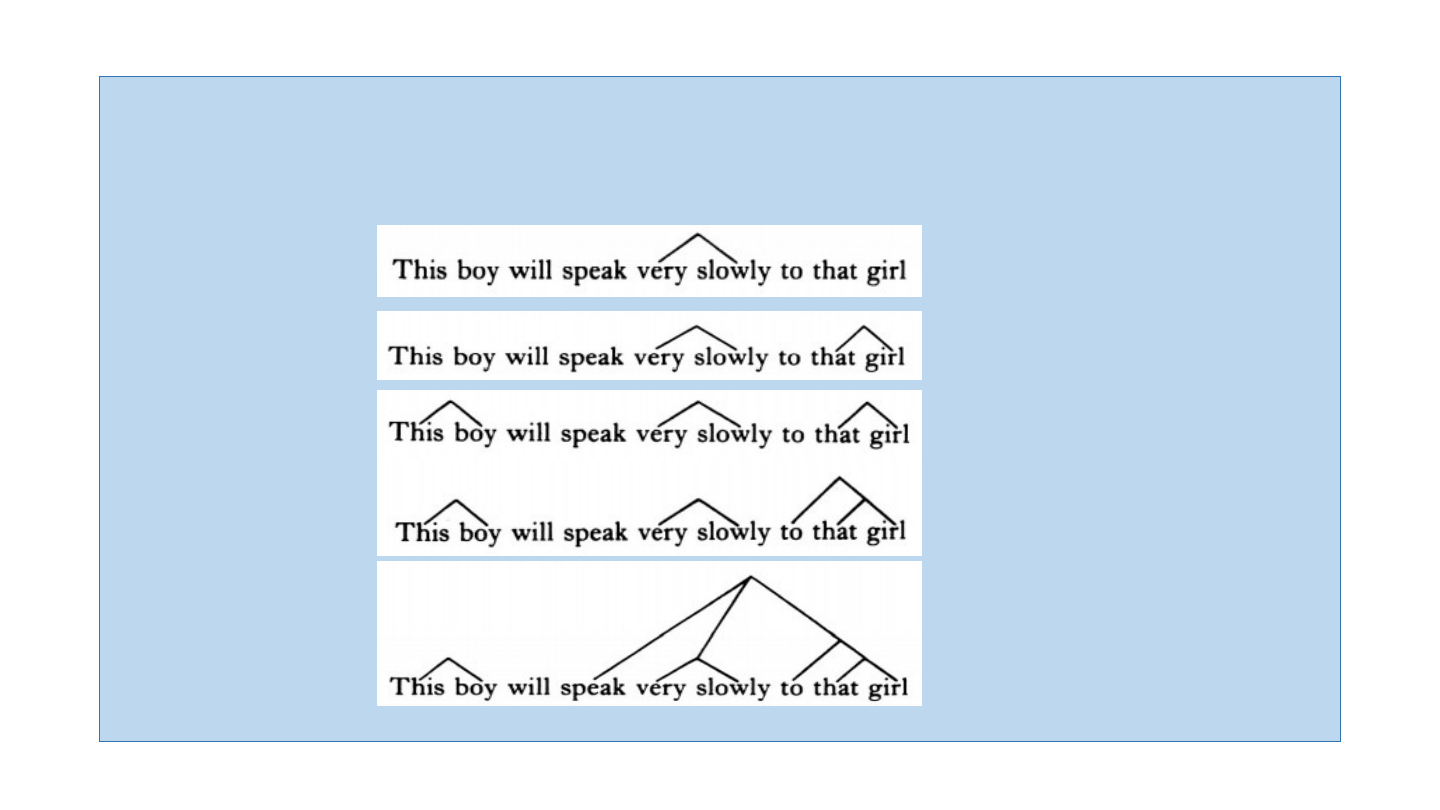
(4) The type of structural relation diagrammatically is represented by grouping the
two words together into a single set as follows:
‘very’ modifies ‘slowly’
‘that’ modifies ‘girl’
‘This’ modifies ‘boy’
‘to’ modifies ‘that girl’
‘speak very slowly to that
girl’ is a structural unit,
a verb phrase.
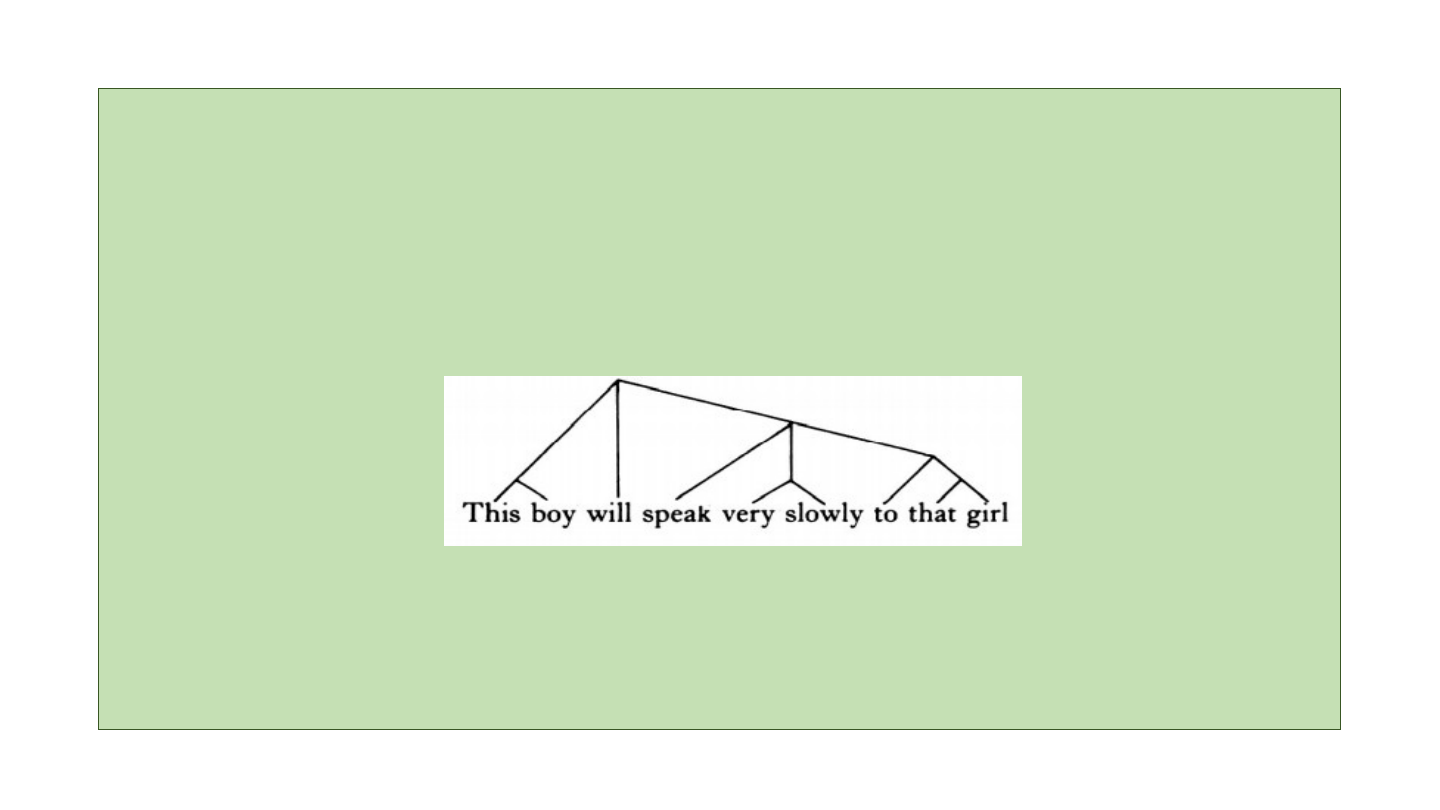
The whole structure ‘This boy will speak very slowly to that girl’ is also
a
structural unit or constituent – one which we traditionally call a clause or
a sentence. The following diagram provides a schematic representation of
our intuitions about the internal syntactic relations between the various
words and phrases in the sentence.
Subject ‘This boy’ and auxiliary ‘will’ are grouped with the verb phrase,
and the smaller constituents are in charge of establishing a larger constituent.

2. Each word can be classified by a constituent of the same type.
‘this, that’ are Determiners.
‘speak’ is a Verb.
‘boy, girl’ are Nouns.
‘will’ is an Auxiliary (the same kind of constituent as can, may, must, would, etc.)
‘to’ is a Preposition (We intuitively recognize that ‘to’ is the same kind of
constituent as with, from, by, at, in, for, etc.)
‘slowly’ is an Adverb (the same kind of constituent as carefully, quickly, etc.)
‘very’ is a Degree Adverb (the same kind of quite, rather, somewhat, etc.)
We can represent this information in an obvious way by labelling each of the words
according to its type or syntactic category, as follows:
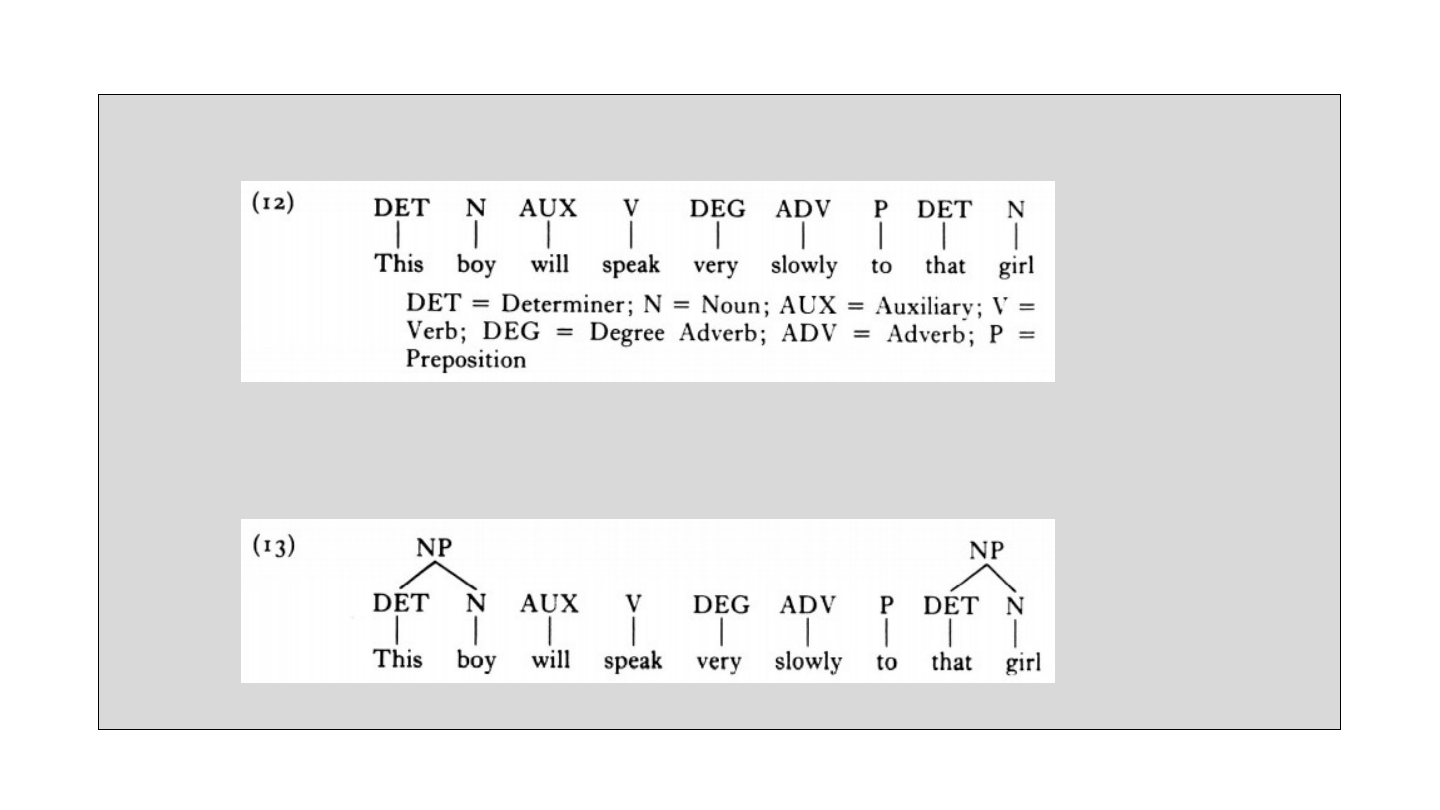
(12) The lexical items can be categorized in the word level.
(13) A Noun as a major constituent or head in a Noun Phrase(NP) is a part in the
larger constituents in phrasal categories.
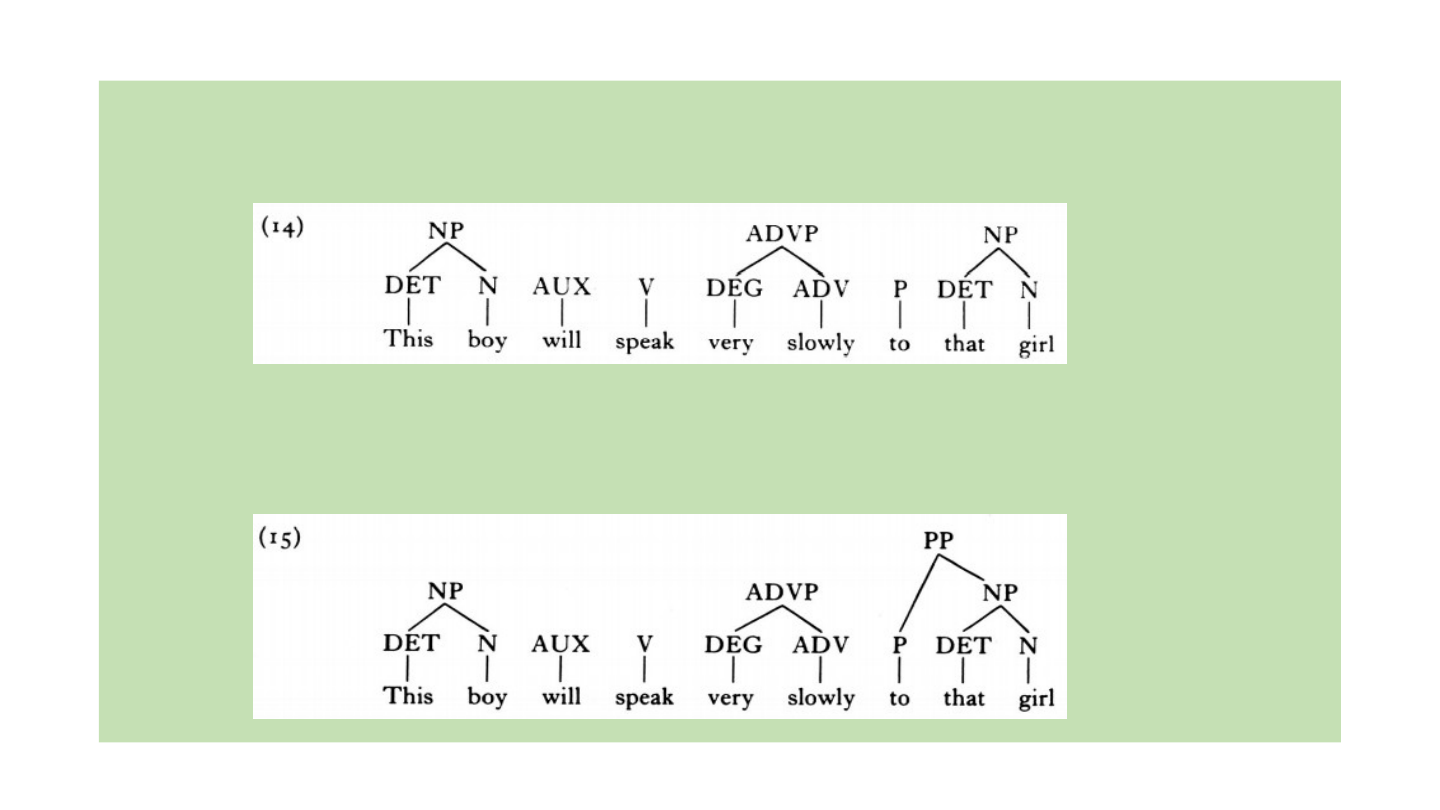
(14) An Adverb as the head (like slowly, quickly, rudely) can build a
an Adverbial Phrase(ADVP) as a phrasal category.
(15) A Preposition as the head (like to, from, into, for) of the phrase can build
a Prepositional Phrase(PP) as a phrasal category.
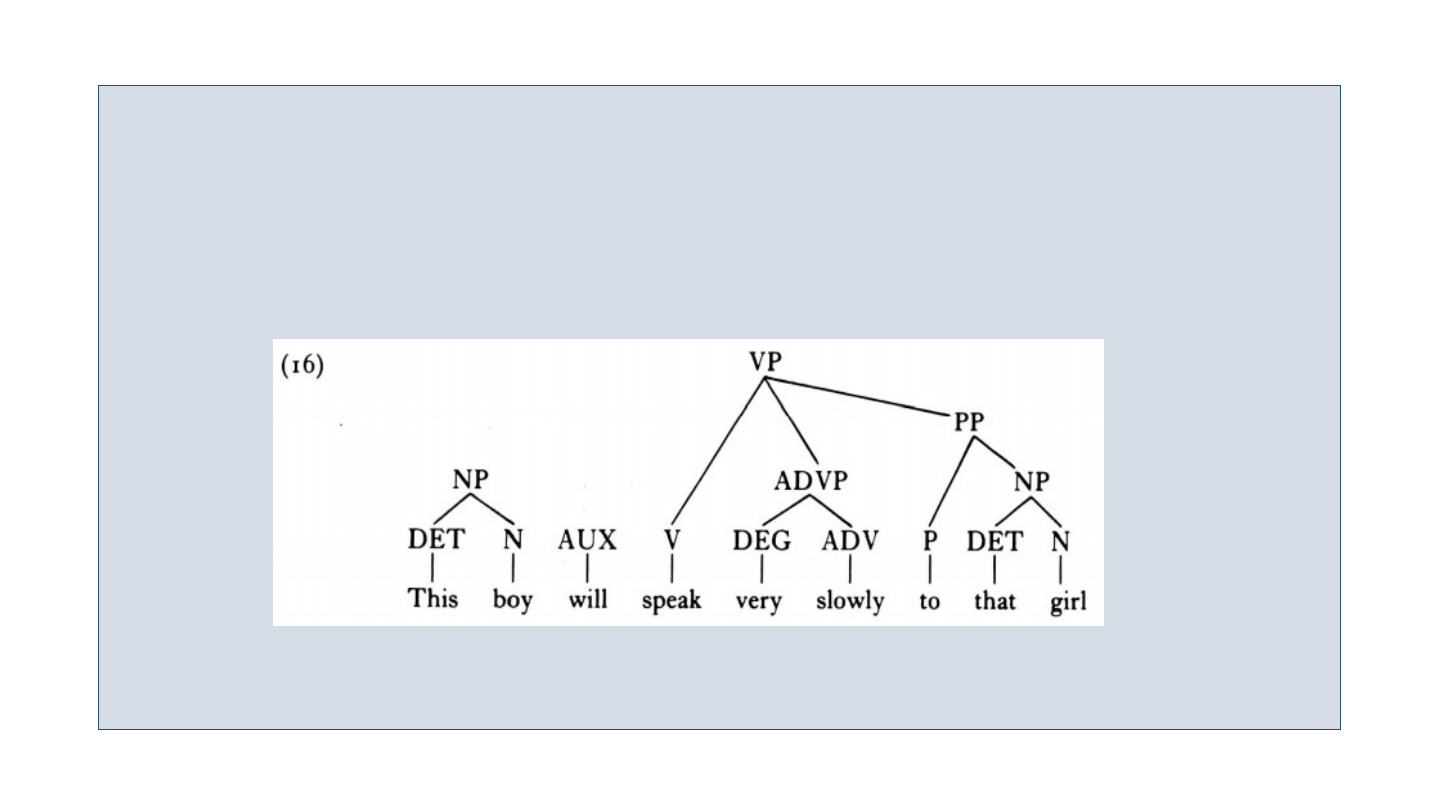
(16) A Verb as the head (like give, run, close) of the phrase can build
a Verb Phrase(VP) as a phrasal category (like give a present to Mary,
run back home, close the door, die tomorrow).
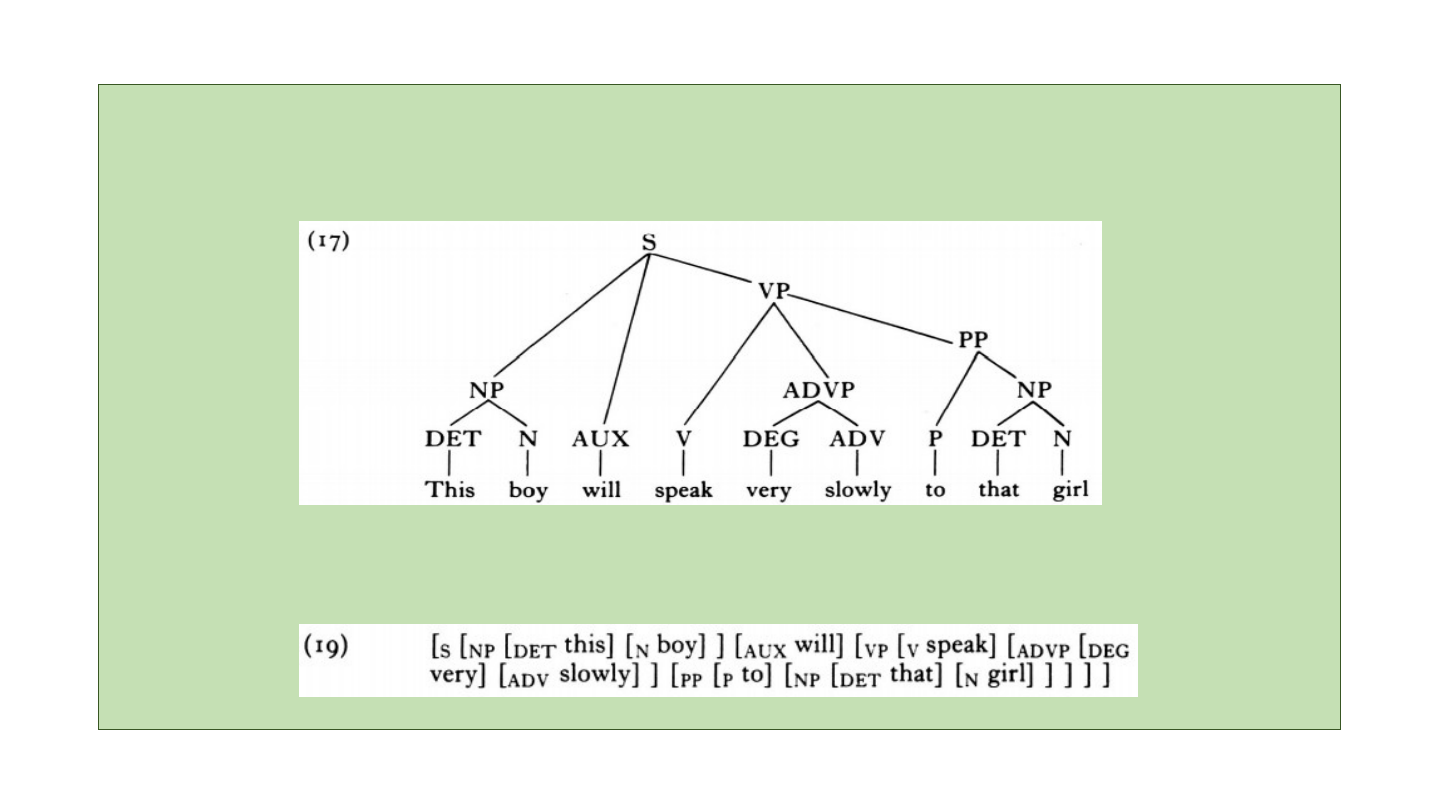
(17) The final structure represents the hierarchical structuring of the words into
constituents(structural units). The type of tree diagram used in (17) is referred
to
as a Phrase-Marker (P-marker).
(19) Another method of visual representation of the superficial syntactic structure
is to make use of labelled brackets.
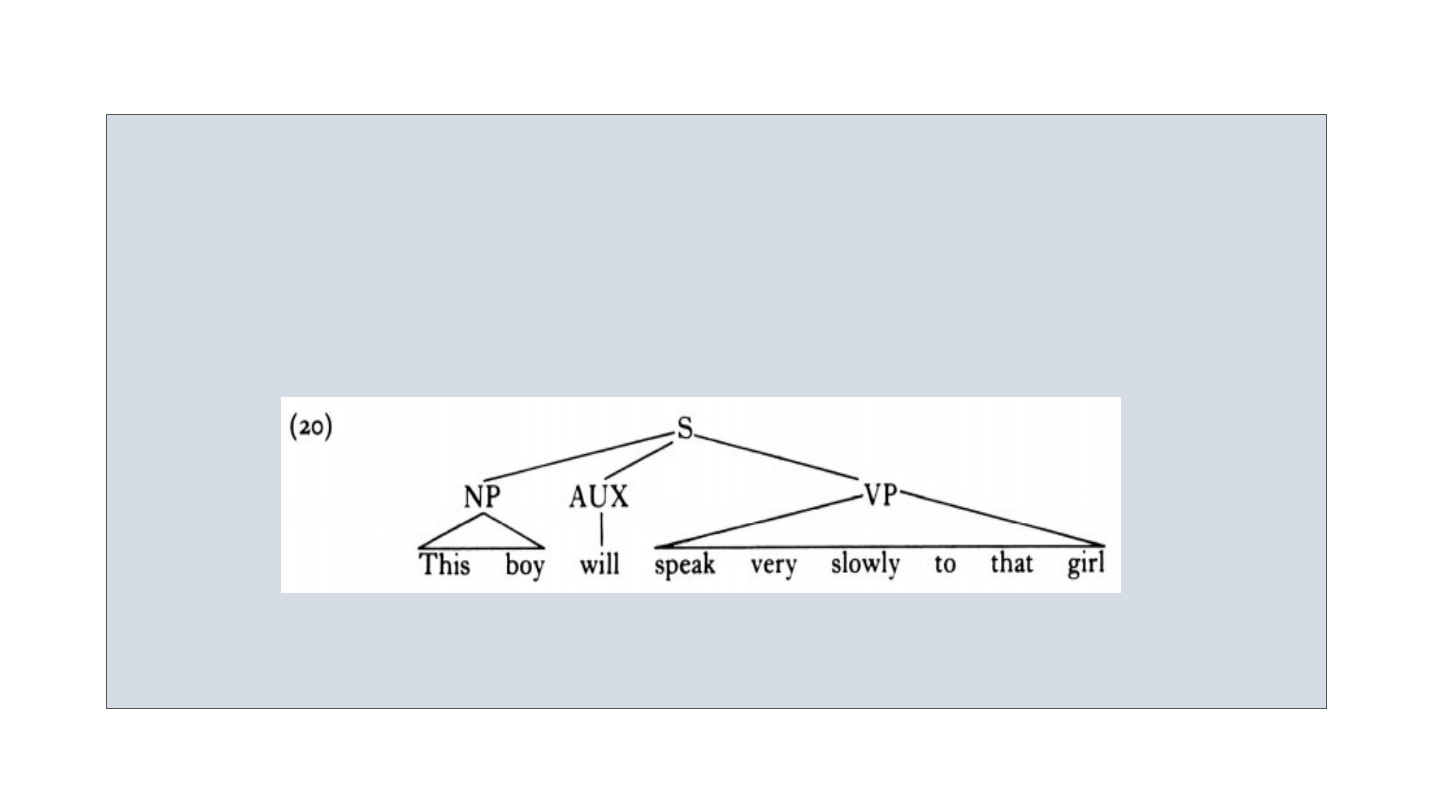
(20) We can use a ‘triangle’ to represent constituents with a complex internal
structure that we don’t choose to represent. So the tree diagram can be
simplified as circumstances require. When this simplified structure is used,
the unit of the phrase categories(NP, VP, PP, AP) can be left: